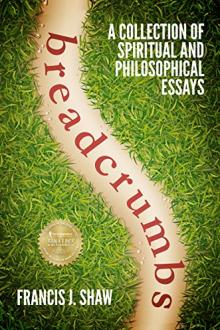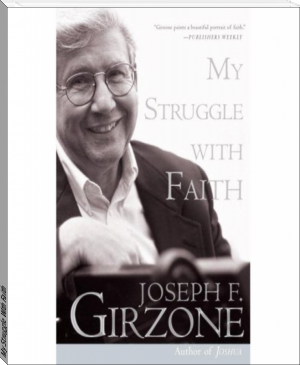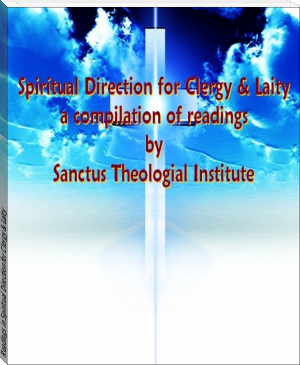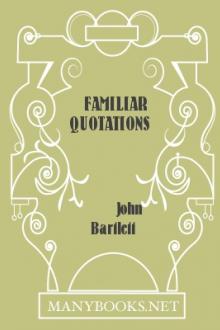Breadcrumbs: A Collection of Spiritual and Philosophical Essays by Francis J. Shaw (top 10 motivational books .txt) 📕

- Author: Francis J. Shaw
- Performer: -
Book online «Breadcrumbs: A Collection of Spiritual and Philosophical Essays by Francis J. Shaw (top 10 motivational books .txt) 📕». Author Francis J. Shaw
For many in the western world we might appear very disconnected from this way of life, but in a strange way, the message is trying to get through. At sporting events we dress up, sing, paint our bodies, exude passion, and some say it’s akin to a spiritual experience. We shouldn’t be surprised. There are no coincidences…
We are all related and we were once all native peoples and can be again, when we reclaim the wisdom of the old ways. We need to transform and change shape back to the circle and the next time conflict is looming, let’s not focus on argument or defend our positions. Perhaps all we need is a shared campfire, where we discover the rhythm that turns our spoken words to melodies and song into dance. It’s there if we dare to believe in the force and power of story, we will see our ancestors, and know in truth and meaning we are all one people and the need for power and ‘isms’ were just stories we chose to believe in.
An opportunity for a different choice is waiting around every corner. The greatest challenge we face is stubbornness. A willingness to give up our notions of success and consider the best answers to the future, maybe found in the distant past.
By 2018, dementia will become a trillion dollar disease. Natural resources continually depleted. Internet speeds ever faster. Our children disconnected. We can’t just add these outcomes to GDP and say it’s acceptable. The battle between fast and slow is one we must win. When we are unhurried, we provide the environment to connect with each other, where we encounter the magical kingdom of community—creating calming zones.
If Timothy had wisdom to share, he kept it to himself….for a very long time. By his death, as the United Kingdom’s longest known resident in 2004, he had progressed to around 165 years old. As it turns out, we were as confused about Timothy as we are about our search to understand progress—it turns out, Timothy, was a girl.
FIVEThe Sandman
THE BIBLE VERSES USED IN this essay are from The Jerusalem Bible, published in England in 1968 by Eyre and Spottiswoode. I chose this translation only because it was a gift from Mother when I was a child and I treasure it.
A boring lesson, an endless meeting, a brain starved of stimulation sends signals down the arm. Fingers twitch in response and reaching for a pen, pencil and a piece of paper, images begin to emerge. We may think of doodling as an innocent activity, lacking meaning; a way of passing time or processing frustrations and stress, but deep down in the recesses of our brains, we are problem solving.
We humans are a people of expression. Complex, deep thinkers, we are super creators, with a burning desire to explain ourselves and our world; through art, music, words, and even the approximately 17 muscles it takes to smile. We experience different states of consciousness, the unconscious, and in-between visionary conditions, which we often assume are an unconnected collection of thoughts, dreams, and desires. At one extreme is daydreaming, in which we almost fully remove ourselves from reality in short bursts. Flights of fancy we take on our own or in the presence of a loved one, but seldom in class or business meetings, where the risk of being singled out to answer a question remains a danger.
We need a different option—one with enough separation to process our thoughts, without the perils of total mental absence. Doodling is the perfect form and it has the additional benefit of potentially deceiving onlookers—we could just be taking notes! If you have doodled, you might stare at the results with the same disconnection you felt to the class or meeting that drove you to pick up the pen in the first place. What we draw most often are shapes and frequently we choose the same ones: stars, boxes, hearts, flowers, and writing our own name, occur with an eerie regularity. Perhaps we shouldn’t be surprised. Carl Jung said, “Transformation takes place in the presence of images,” and when look at all the great spiritual concepts—love, faith, hope, charity, and more, they are tools we are invited to use to lead on us on a path to change, because when we learn and grow, we begin in one place and end up in another. Unlike words, which mostly create certainty, images require interpretation, and it’s within this space we encounter the possibility that solutions have more than one answer. Because images are muddled we are less likely to apply our greatest weapon of self-destruction—judgment.
In St. John’s Gospel, there is a story, which scholars don’t believe was authored by John. In it, Jesus delivers one of his many great one-liners to silence the Pharisees, who had a habit of being blinded by the word of the law, while ignoring its heart. The story of the adulterous woman16 is striking because Jesus does something else other than listen and speak. “Master, this woman was caught in the very act of committing adultery, and Moses has ordered us in the law to condemn women like this to death by stoning. What have you to say? They asked him this as a test, looking for something to use against him. Jesus bent down and started writing on the ground with his finger.” After delivering his superb retort, “If there is one of you who has not sinned, let him be the first to throw a stone at her,” he bent down and wrote on the ground again.
Scholars have suggested several possibilities for what he might have drawn or written in the sand and although we can only speculate, none I am aware of suggested Jesus doodled. Perhaps we can’t make the leap and prefer a theologically based answer to the sand mystery, as it fits better to images we feel we ought to have of the Son of God. Many had pushed his buttons for some time and he must have grown weary of the constant tests and weaknesses of humankind. We remember what happened to the money changers and we have other examples of his frustrations spilling over.
In the Gospel of Mark, a man appears with his son who exhibits epileptic like symptoms.17 The man says, “I asked your disciples to cast it out and they were unable to.” Jesus responds, “You faithless generation. How much longer must I be with you? How much longer must I put up with you?” As the boy’s father asks for his help, Jesus reminds him, “Everything is possible for anyone who has faith.”
Having faith is such a wonderful gift and truly, with it, everything is possible, but we often find ourselves challenged and troubled by the sands of time. We are the woman about to be stoned—judged and pronounced guilty, we feel powerless and alone. We are members of the crowd, ready to mete out justice, as we interpret it, to those we accuse. We are the questioned, by those who seek our support to justify their actions. We are the doodlers in search of a gospel that can change our view of others, ourselves, and make sense of our journey.
From the old English, ‘Godspell,’ Gospel is defined as ‘good news’ or ‘glad tidings,’ but ‘spell’ also has another meaning, as story, tale, or fable. Just as the biblical account reports the Gospel of Jesus, we too have our story to tell. Reading the accounts of his life, we may focus on the differences between us, but there are also similarities in our experiences. People question our words. We experience rejection when we speak or act and those we trust may betray us. We find it difficult to love our enemies and turn the other cheek as Jesus directed and our judgment is most fierce when applied to ourselves. We grow frustrated, stubborn, and stop seeing a way forward—we draw a line in the sand and struggle to budge.
Jesus preferred to instruct using parables. Accounting for almost a third of his teachings, and variously described as concise comparisons, analogies, illustrations and even riddles, they baffle their listeners. Used by countless educators, including Buddha and the great Greek Philosophers and present in all the major religious beliefs, they have almost disappeared in our modern world; lost to us. Why did the great spiritual masters choose parables to communicate? Why didn’t they just say clearly what they meant? Actually, sometimes they did and so did Jesus. When a man asked him what he must do to inherit eternal life18 the man said he had kept the commandments, but went away sad, when Jesus told he should sell everything, give the money to the poor and follow him, because he was wealthy.
Hearing a straight-talking truth is difficult. We don’t like being told what to do or think and tend to get defensive. They do serve to snap us out of the roadblocks we build to create space for the parables. These invite us to journey into the mystery the stories create, and because they are ambiguous, stimulate our curiosity and imagination to seek the truth they illustrate. We don’t learn when given meaning. We must discover it for ourselves.
It’s possible the mythical Sandman might sprinkle magical sand in our eyes at night, to give us dreams to show us the way, but it’s more likely we will find our path by first ‘shaking the dust from our feet,’19 to rid ourselves of the illusion that we are innocent bystanders. It’s what the stone throwers forgot when they approached Jesus with the law trap and although it’s not recorded what was said as the crowd slowly dispersed, we can imagine, because we have all been there. ‘The truth will make you free,’20 and it will also make you extremely uncomfortable, which is the same blessing behind our doodling. A message is trying to make itself heard and it will try any means, including imagery and parables to grab our attention, because we have a gospel and glad tidings to discover and share in our own stories.
I can’t imagine what the woman was thinking. There is a distinct lack of information in the text, which creates questions around her true identity. According to the Law of Moses, prior to stoning, she would have received a trial. It’s curious that the Pharisees, so hot on the law, don’t mention it. A trail, fair or not, would give them more solid ground for their argument, but they only say she was ‘caught in the act.’ Plucked off the streets as a pawn used by the Pharisees to





Comments (0)